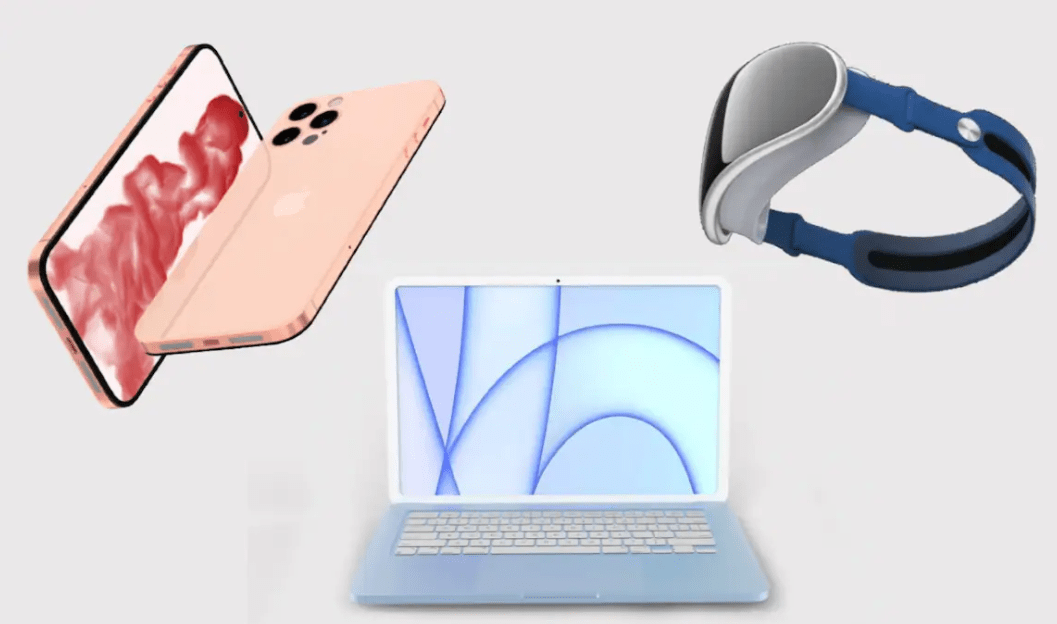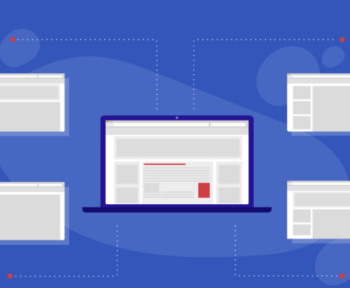There is no need to project Apple as the biggest brand in the field of technology in terms of revenue generation and notoriety. Known and recognized, the Apple brand continues to innovate to deliver technological jewels such as the MacBook, iPod, iPhone, iPad, iWatch, and more. With the excellence and diversity of its product, it can easily dominate the market, not to mention the hearts and minds of many enthusiasts. These factors, combined with highly effective communication, have allowed Apple brand equity to reach $ 2.3 trillion (data from January 2021). The data is enough to turn the heads of many of its competitors.
But what can your business learn from Apple’s success? What marketing lessons can we learn from the strategy of the American giant? Decryption in our article.
Table of Contents
The foundation of Apple’s success strategy
Segmentation, target, positioning
As Apple is the No.1 manufacturer in the high-end smartphone market, Apple mainly divides its customers based on lifestyle. This segment is generally tailored to the urban population who have sufficient purchasing power to purchase the product at higher prices. These people were receiving early in life, but the value of the Apple brand is that even those who arrived late began to receive the products.
In its marketing strategy, Apple targets three target groups:
- The first is aimed at music lovers via Apple’s iPod and iTunes.
- Another target group is professionals or teenagers targeted by iPhones, tablets, MacBooks, and other gadgets that can be used by everyone regardless of age.
- Finally, the third target is an audience that can use its other products and services, such as the Apple TV and the Apple iWatch. They also use iBooks, Apple Pay, etc.
Apple being the No.1 brand in the world is the most important of its position. When talking about a smartphone, laptop, or tablet, there is no doubt that Apple is the first brand that consumers remember in most cases.
Tagline - “Think Different” is one of the best taglines in the tech industry. Many believe that Apple came up with the slogan “Think Different” in response to IBM’s “Think” motto. However, since 2002, Apple has ceased to use this slogan in its marketing. But from time to time it reappears on the Apple website or in its marketing and the brand never leaves the minds of loyal customers.
Significant competitive advantage

At the company level, even though competition for Apple is very weak, most brands try to outperform the brand on each of their products. In fact, the iPhone vs. Android war is still relevant, especially as Chinese smartphone brands continue to multiply. On the other hand, the MacBook faces stiff competition from Dell, which also has better products. This also applies to specialized services provided by Apple, such as iTunes, which struggle with other online music players that pop up every day. Samsung Gear and other smartwatches have strong opposition to the iWatch, although the latter still has a majority market share.
However, this tough competition does not intimidate Apple, which has several competing advantages that allow it to outperform other market players:
Superior technology products - MacBook and iWatch are clearly market leaders due to the operating system and technology used.
Brand Value - Apple has always topped the list for brand value and has been a cult favorite for years.
Revenue over time - Apple has deep pockets due to its high margins.
R&D - One of Apple’s biggest competitive advantages is the amount it spends on R&D, which looks to the future rather than the present.
Profitable Product Portfolio
By plotting Apple’s BCG matrix, its product portfolio is clearly divided into four parts:
- Cash cows are products that have been around for years, which cannot be questioned in the current market conditions. These include the MacBook, iPhone, iWatch (50% market share in 2015), and iTunes (strong support service for all Apple products), which hold the majority of the market share.
- The stars are the iPad and iBooks, which require significant investment to stay on top of the growing competition. The dilemma business is represented by Apple TV, which has a low market share in an area that exhibits great potential and will grow rapidly in the future.
- Deadweight is undoubtedly the iPod. Although it has a large market share, the industry is rapidly declining with the advent of smartphones to replace the iPod. In that sense, it does not contribute to Apple’s profits or growth.
Electronics Giant Apple (Think different) Marketing Strategy

5 lessons to learn from Apple’s marketing strategy
If you want to create a buzz like Apple (Think different)’- and one day take your stock to the next level - check out these five marketing tips.
Focus on simplicity
Very few brands, like Apple, understand the importance of simplicity. Technology products, in particular, are guilty of delivering too many messages through their marketing in an attempt to communicate the high value and benefits of the product.
Apple prefers simplicity to skip the glitter. Visit its website or see its advertisements to get the feel for it. The American giant minimizes content and displays simple graphics that the product speaks for itself. In fact, the first important item on Apple’s website is a lot of free space. The text is very limited, the product sheets are small and rarely have technical jargon so it is accessible to everyone. In contrast, products are presented to the customer with their unique designs from every angle.
Prepare the air of mystery to splatter
Most companies give up their way of maintaining privacy during product development, but Apple has mastered the art of teaser marketing. The company is careful not to divulge details of its latest products in order to create an atmosphere of suspense and maintain suspense for as long as possible. Weeks or months before the release of each iPhone, the media conversation reaches a deafening level. Furthermore, Apple takes pleasure in raising this fire by providing virtually no information. She sometimes goes so far as to turn rumors into speculation.
Playing with the patience of its customers, Apple makes a splash with every product launch, so you can not wait to get your hands on it!
Create the illusion of scarcity
Vendors of luxury goods have long understood that scarcity (real or perceived) makes production more desirable and in demand. Shortage not only increases the value of a product but also motivates procrastinators and anyone who wants to be part of a fashionable group to rise up and buy. This is one of the reasons why handbags and other luxury items are becoming a priority strategy of manufacturers. Apple is no exception to the rule as it finds its own ways to exacerbate the feeling of false scarcity.
When it comes to the new iPhone, stocks are always limited. You can pre-order it or go to the Apple Store to get it, but if you do not hurry, you will have to wait for the next product batch. This is when the iPhone XR went on sale after pre-orders on the website ran out of stock before the release date. This strategy has the effect of increasing the difficulty and optimism of owning one.
Another way Apple calls for discounts is through the pricing process with its products. Of course, Apple has never been involved in a price war, yet the people who practice it are far more than its competitors. If Apple can do this, then the brand wants to focus on promoting its unique value proposition.
It’s partly an attempt to establish a luxury idea with high prices, but it’s not the only benefit. This is a way of showcasing product design ideas that set Apple apart from its competitors. For example, the use of high-quality design materials such as glass and aluminum instead of plastic in construction.
It’s showing customers that with Apple products they are getting what they can not get anywhere else. Using scarcity is a valuable way to encourage people to pay a premium price for their goods.
Provide a memorable customer experience
Anyone can make a product, but only a few can create a memorable experience for the customer and keep them coming back again and again.
Apple products are always designed to be different, enjoyable, and user-friendly. I use the term user friendly because the main driver behind every Apple product is easy to use complexity. This desire translates to innovative functions such as zooming, scrolling, or touch screen “gestures” for your personal assistant SIRI. These innovative gadgets help to enhance the user experience and that is what they appreciate.
In addition to its innovative products, the Apple brand seeks to provide a unique experience in its Apple stores, 20 of which are located in France. Rather than forcibly selling the product, they focus on helping the customer and making it comfortable for him/her to use Apple.
Apple has also introduced the Apple Genius Bar, a walk-in service center that can help any customer with any issues with their MacBook, iPhone, or iPad. The consumer is immersed in the work he does, giving him the impression that he is not a regular buyer of products.
Unite a loyal fan community
Apple has created a brand culture that has attracted a community of enthusiastic followers who recognize the brand’s innovation, simplicity, and coolness. They are fans who follow the whole family of Apple products and should have the latest gadget as soon as it is released, even if they have to wait in line for hours. This is a real event to watch. Apple Pros will never give up the iPhone in favor of Samsung. Clear loyalty that benefits the brand.
Final thoughts: Inspired by Apple, Marketing Goliath
Today, there is no denying that Apple Marketing is Goliath. But that does not mean that your customers will not be able to use even these great strategies. To hone your skills, get inspired by the best ones.
All the factors that make the Apple campaign successful will help you to achieve better results with your customers. Just remember:
Keep it simple - do not overdo it, simplicity is always a success factor.
Create suspense - do not let go of the product completely before starting it. Expect this from people and give them a chance to discuss the possibilities themselves.
Ask for scarcity and urgency - offer what people can not find anywhere else and make sure they know it is limited.
Provide a meaningful customer experience - Think comprehensively about the customer experience. Don’t just stop with product design, but see how it is sold and displayed in the store or on your website, as well as the customer service experience with your call center.
Unite your customers around your values - Once you have defined what your brand is, focus on the types of customers who share those values and examine whether it is social media, blogging, or personal dating. We build digital communities through our channels so that your business and your brand fans can easily connect with each other.
Apple “Think different” is always looking for new and creative ways to create excitement for its product launches. Do you do the same for your customers?
Other related reads
Red Bull Marketing Strategy: The Case Study
A go through into the marketing strategy of Starbucks
Oreo Marketing Case Study: A blend of 4Ps of Marketing Mix






1 Comment
Markarrot
this is really a detailed information on marketing strategy of Apple thank You for sharing such a detailed information